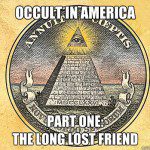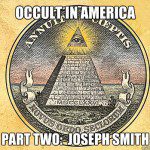For me, “Pagan Music” has always been more about a sound or a feeling than explicitly Pagan lyrics. Music becomes Pagan to me when it conjures up Pagan images and emotions inside of me, regardless of the religious leanings of the artists in question. If the music works then it works, I don’t think anyone has to be dripping with pentacles to be appreciated by Modern Pagans. Do I support music created and written for an explicitly Pagan audience? Sure do, but I’d probably go crazy if that’s all I had to listen to.
 The late 60’s and early 1970’s saw a drastic increase in occult and Pagan material. Witches like Alex Sanders released recorded rituals on major record labels, and the first “Witchcraft How To” books began showing up in book stores. The first honest to Goddess Pagan music was released during this period too, along with several albums that had a distinctly Pagan or Witchy vibe. Many of these albums have been lost to the sands of time (and garage sales), but are still worth tracking down. “Classic Rock” is more than just Led Zeppelin and Pink Floyd . . . . Before you yell at me this list is not meant to be exhaustive it just highlights things that I enjoy and are familiar with. I’m always up for recommendations. (And I had so much fun writing it and listening to all of these bands that there will be future installments.)
The late 60’s and early 1970’s saw a drastic increase in occult and Pagan material. Witches like Alex Sanders released recorded rituals on major record labels, and the first “Witchcraft How To” books began showing up in book stores. The first honest to Goddess Pagan music was released during this period too, along with several albums that had a distinctly Pagan or Witchy vibe. Many of these albums have been lost to the sands of time (and garage sales), but are still worth tracking down. “Classic Rock” is more than just Led Zeppelin and Pink Floyd . . . . Before you yell at me this list is not meant to be exhaustive it just highlights things that I enjoy and are familiar with. I’m always up for recommendations. (And I had so much fun writing it and listening to all of these bands that there will be future installments.)
I’ll be writing more about Fairport Convention‘s Leige and Leaf (1969) in the coming weeks, but I couldn’t leave it off this list. I’m not exaggerating when I say that Leige and Leaf is one of the great folk-rock records ever made, and it makes my short list of best albums ever, it’s just that amazing. Everyone involved in this record are among the best ever to play (or sing) their respective instruments. Sandy Denny is the English Janis Joplin (but better-gulp) and Richard Thompson is among the finest English guitar players not named Page, Clapton, or Beck.
Leige and Leaf is essentially an album of traditional folk songs, but given a bit of rock and roll swagger along with some new arrangements. The three original tracks on the album feel timeless by the second listen and fit comfortably next to their well pedigreed siblings. What makes the album feel “Pagan” is the timeless nature of the songs. Tunes like Matty Groves (which dates back to the 17th Century) tap into that feeling of nostalgia for the long lost English Countryside; where the Christian and Rustic Pagan exist blissfully side by side.
The album shifts from the highest of highs (Come All Ye) to the lowest of lows (Farewell, Farewell written in honor of recently deceased Fairport drummer Martin Lamble) with equal aplomb and with beauty present in both the sadness and the joy. The only real “Pagany” sounding lyrics are in Come All Ye:
Come all ye rolling minstrels
And together, we will try
To rouse the spirit of the earth
And move the rolling sky
but it doesn’t really get any more explicit than that.
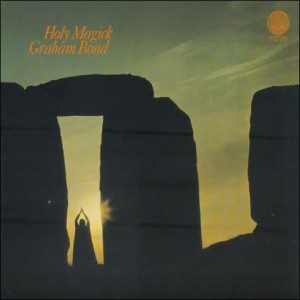 Graham Bond is a minor footnote in British rock history, but for a period in the late 60’s and early 70’s he was a peer of such luminaries as Eric Clapton, Jack Bruce, and Jon Lord (of Deep Purple). More of a jazz musician than a rocker Bond was a still pioneering force in the 60’s English Blues Scene, playing saxophone and organ with various bands and as a solo act. A devotee of Aleister Crowley Bond released three records with Thelemic and Magickal themes from 1969-1971. Both 1970’s Holy Magick and 1971’s We Put Our Magick On You are worth tracking down (and it’s even easier since they were released as a double CD in 1999).
Graham Bond is a minor footnote in British rock history, but for a period in the late 60’s and early 70’s he was a peer of such luminaries as Eric Clapton, Jack Bruce, and Jon Lord (of Deep Purple). More of a jazz musician than a rocker Bond was a still pioneering force in the 60’s English Blues Scene, playing saxophone and organ with various bands and as a solo act. A devotee of Aleister Crowley Bond released three records with Thelemic and Magickal themes from 1969-1971. Both 1970’s Holy Magick and 1971’s We Put Our Magick On You are worth tracking down (and it’s even easier since they were released as a double CD in 1999).
 I’m probably more partial to Holy Magick which is essentially a ritual set to music, but only because of its ambition. As a collection of songs it works less well than We Put Our Magick On You, but it gets its point across strongly. Musically most of Graham Bond reminds me of Cream, but with saxophone solos. There’s also a gritty quality to Bond’s voice that you’ll either find pleasant or irritating (or you’ll get him confused with Lemmy from Motorhead).
I’m probably more partial to Holy Magick which is essentially a ritual set to music, but only because of its ambition. As a collection of songs it works less well than We Put Our Magick On You, but it gets its point across strongly. Musically most of Graham Bond reminds me of Cream, but with saxophone solos. There’s also a gritty quality to Bond’s voice that you’ll either find pleasant or irritating (or you’ll get him confused with Lemmy from Motorhead).
Bond’s probably at his most palatable best on songs like Druid and I Put My Magick On You where it sounds like he’s really getting down. What’s most surprising about the song Druid is that it’s not the official song of ADF. It’s got a fat groove and a huge sing-a-long quality that should make it a must for any Pagan festival band.
If you want a potion
To get you in the mood
Take some belladonna morning glory and mandrake
Stick it in your foodI’m a Druid baby
A priest of Stonehenge
I’m a Druid baby
A priest of Stonehenge
I gotta message for you people
That is life never endsDown to the grove
Where the sacred oaks grow
With my golden sickle
I cut the mistletoe
Then we do the sacred dance
That only Witches and Druids know
Sadly, Bond committed suicide at the age of 36 after years of drug abuse and mental health issues, but his music lives on.
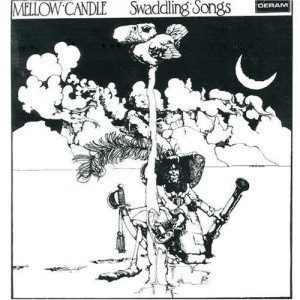 Perhaps even more obscure than Bond is Dublin Ireland’s Mellow Candle who released only one album, Swaddling Clothes, during their brief run from 1965-1973. There’s magick and references to witches on Swaddling Clothes, but it’s the haunting melodies and soundscapes that make the album the perfect soundtrack to a chilly Samhain night. The vocal harmonies of Alison Bools (later O’Donnell) and Clodagh Simonds are bone-chilling, a little creepy, and completely hypnotic. Never in my wildest dreams did I think I’d find myself humming to near classical sounding piano while singing the lines “come into our office and I’ll show you.”
Perhaps even more obscure than Bond is Dublin Ireland’s Mellow Candle who released only one album, Swaddling Clothes, during their brief run from 1965-1973. There’s magick and references to witches on Swaddling Clothes, but it’s the haunting melodies and soundscapes that make the album the perfect soundtrack to a chilly Samhain night. The vocal harmonies of Alison Bools (later O’Donnell) and Clodagh Simonds are bone-chilling, a little creepy, and completely hypnotic. Never in my wildest dreams did I think I’d find myself humming to near classical sounding piano while singing the lines “come into our office and I’ll show you.”
As with any British Folk Rock Record of the early 1970’s there are forays into hippy rhythms and beats, but it always feels more joyous than cliche. Tunes like The Poet and the Witch feel more like a conjuring than a rock and roll song, and there’s a mythic/fairy tale like underpinning to much of the proceedings that should appeal to anyone who dances under a full moon. The gorgeous Silver Song was the album’s only single but my favorite cut is most certainly Reverend Sisters.
http://www.youtube.com/watch?v=CCA44nNlDJAWhile Mellow Candle only released one record during their time together the band did release an album of Swaddling Clothes demos with a few other odds and ends in 2004. That album, Virgin Prophet, is even harder to track down than the first release which as of this writing isn’t available via legal download. Both Alison O’Donnell and Clodagh Simonds remained active in the music business during the 1970’s, usually in a backing roll. Over the last fifteen years both have become more visible. In 2009 O’Donnell released the album Hey Hey Hippy Witch and Simonds performs with the group Fovea Hex.
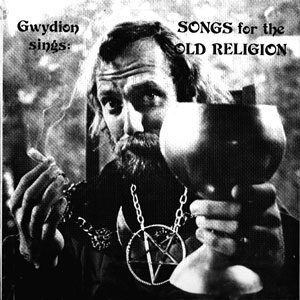 As far as I know Gwydion Pendderwen‘s Songs For the Old Religion is the first Contemporary Pagan album recorded by an out and out Pagan specifically for Pagans. With songs for nearly every sabbat and odes to both Goddess and God there’s something for nearly everyone here. Much of the album has a playful vibe and you can get the feeling that Gwydion and The California Wicca Blues Band (a fantastic name for the group of musicians who played on this record with Pendderwen) had a great time while recording the songs on this record.
As far as I know Gwydion Pendderwen‘s Songs For the Old Religion is the first Contemporary Pagan album recorded by an out and out Pagan specifically for Pagans. With songs for nearly every sabbat and odes to both Goddess and God there’s something for nearly everyone here. Much of the album has a playful vibe and you can get the feeling that Gwydion and The California Wicca Blues Band (a fantastic name for the group of musicians who played on this record with Pendderwen) had a great time while recording the songs on this record.
Don’t let the name California Wicca Blues Band fool you either, this isn’t bluesy roots music. There’s a strong campfire folk music feel to the majority of the album, but there are variations. The Sun God sounds like an outtake from the musical Hair (think Age of Aquarius), but finds redemption in its earnestness and the gorgeous lead vocals of Dana Corby (she’s even better on Spring Strathsprey). There are also come “Celtic” sounding moments which never feel out of place. The most well known song on the record is probably The Lord of the Dance, and for good reason. There’s a strong melody and a harmony filled sing-a-long chorus that’s nearly irresistible. (I’ll admit my bias, it’s a song about the Horned God, how can I not love it?)
On the downside the album hasn’t aged well. Recorded on a shoe-string budget even the newest CD remixes contain a lot of tape hiss and even a few skips in the music. (The original masters have been missing for decades, and the CD remasters have been taken from the old records.) With that being said, this is no mere curio and remains a vital Pagan recording. Pendderwen’s second album The Faerie Shaman is probably the better of his two recordings, but I haven’t gotten that far in this series yet. Want to pick up a copy of this album? Good luck, it looks to be out of print again. If I’m wrong, please let me know in the comments. If it’s true we as a community need to do something about it. Gwydion’s music is a part of our history and our legacy, and the Great Pagan Bard deserves to always be with us. Sadly, Gwydion died in an automobile crash in November of 1982.
(While working on this piece I put out a panicky “Are Gwydion’s albums out of print” SOS on Facebook. While Pendderwen’s albums are currently out of print, that won’t be the case for much longer. Oberon Zell kindly posted this message to my thread:
It is our intention to re-master Gwydion’s albums ASAP, and market them through Mythic Images (www.MythicImages.com). All the profits, will continue to go to support Annwfn. MG (Morning Glory) is supposed to be handling the arrangements–but she’s been really sick of late and hasn’t been able to get around to it. As I understand, Anna Korn has the masters, and Mama Maureen will be able to do the printing.
Awesome news! Thanks Oberon and Morning Glory and all involved with this project!)
More albums to come!


